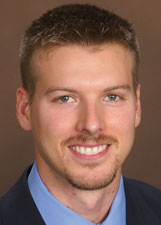October is National Chiropractic Health Month–did you know Chiropractic is the largest, most regulated, and best recognized of the complementary and alternative medicine (CAM) professions? CAM patient surveys show that chiropractors are used more often than any other alternative provider group and patient satisfaction with chiropractic care is very high. There is steadily increasing patient use of chiropractic in the United States, which has tripled in the past two decades.
At some point, nearly everyone gets hit with back pain, especially lower-back pain. Such pain can feel sharp. Or it can be a dull ache with tingling, burning, or numbness. Back pain is the second-most common reason for a trip to a doctor and one of the major contributors to disability worldwide. Many non-chiropractic health care professionals recognize the value of chiropractic back pain treatment. In a Journal of the American Medical Association article published in 2013, the authors suggested chiropractic for low-back pain. Surgery was mentioned as an option only if all else fails. In another highly respected medical journal, manual manipulation was shown to beat medication for short-term relief of chronic back pain. With prescription pain drug abuse now classified as an epidemic in the United States and the number of spinal fusions soaring 500 percent over the last decade, the essential services provided by doctors of chiropractic (DCs) represent a primary care approach for the prevention, diagnosis and conservative management of back pain and spinal disorders that can often enable patients to reduce or avoid the need for these riskier treatments.
But Doesn’t Back Pain Simply Disappear By Itself?
Researchers used to believe that back pain would heal on its own. Minor back injuries do often go away on their own within a day or two. But although back pain may disappear temporarily, it is relatively likely to return. It has been demonstrated that more than 33 percent of people who experience low-back pain find that it lasts longer than 30 days. If your back pain is not resolving quickly, it may be the result of mechanical problems that a doctor of chiropractic can address. Many chiropractic patients with long-lasting or recurring back pain feel improvement shortly after starting chiropractic treatment.
How We Harm Our Backs
Many factors negatively affect our backs, including poor posture; improper lifting, reaching and twisting; too much sitting, or occupations that are known to be particularly hard on backs. Nursing, delivery drivers, farmers, firefighters/EMTs, construction workers may strain their backs by lifting heavy objects or people. Mechanics and roofers frequently twist their spines into physically awkward positions. Police officers strain their backs by sitting in their cars for prolonged periods, followed by bursts of often strenuous activity. Truck and tractor-trailer drivers often compress their spines by sitting in one position in a vibrating vehicle for hours at a stretch. This can lead to disc degeneration.
Prevention Tips
• Walk. Our backs benefit when we take a break from sitting to walk around or exercise. Try taking 100 brisk steps every hour on the hour.
• Ergonomics. Many people hunch over their keyboards or reach for the mouse in a way that stresses the shoulder, neck and/or back. The mouse should always sit only a couple of inches from the keyboard.
• Lifting. Bend the knees and keep the object close to the body. Above all, do not twist the body while lifting.
• Sleeping. Use a medium firmness mattress to give your spine the proper support and stay off your stomach.
• Exercise. This will help to prepare the back and your muscles to respond in healthy, pain-free ways.
Get checked; get relief naturally at Holmes Lake Chiropractic!
by Austin Weaver, DC
402-483-4409

